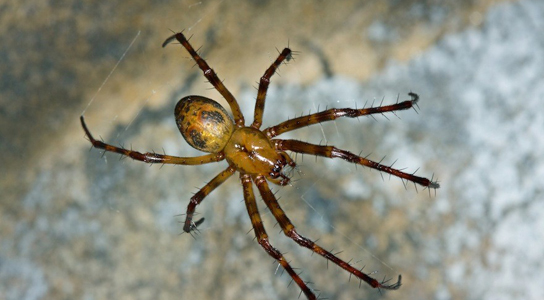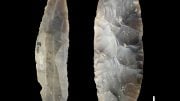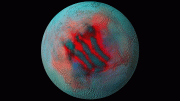
European cave spider (Meta menardi)
Researchers have discovered that the European cave spider (Meta menardi) has some of the most stretchable spider silk, which can elongate up to 7.5 times its length. The reason why their silk needs to be so elastic is that M. menardi produces silk to protect egg sacs that will eventually protect their young.
It’s well known that spider silk has remarkable properties, such as strength and toughness. Most arachnid species produce seven or eight different types of silk for different reasons. Dragline silk allows spiders to anchor their webs, while different types of silk are used for the scaffolding and to capture prey.

M. menardi lives in dark, humid places, and can be found from northern Europe to Korea. They produce pear-shaped egg sacs that hang from cave ceilings. This tubuliform silk has an irregular surface, unlike any other type of silk, and is coated with a gluey secretion that fastens different fibers of the silk together.
In a study published in the journal PLoS ONE, researchers collected egg sacs from caves in Piedmont, Italy, and tested them. A tensile test proved that the silk fibers stretched 7.5 times its initial length, whereas egg-sac silk from other spiders only stretches 20 to 50 percent before snapping.
The research suggests that the egg stalk is composed of densely and randomly packed fibers, which can unroll a great deal in order to stretch.
Reference: “Evidence of the Most Stretchable Egg Sac Silk Stalk, of the European Spider of the Year Meta menardi” by Emiliano Lepore, Andrea Marchioro, Marco Isaia, Markus J. Buehler and Nicola M. Pugno, 8 February 2012, PLoS ONE.
DOI: 10.1371/journal.pone.0030500









Be the first to comment on "European Cave Spiders Produce Extremely Stretchable Silk"